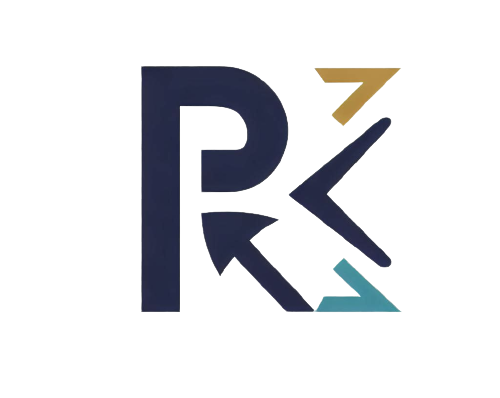
Understanding the functionality and application of HTTP status codes such as 307 and 308 can greatly enhance the navigational experience on various websites, ranging from news outlets to e-commerce platforms. With every click and interaction, these behind-the-scenes heroes are on duty, providing the critical role of managing and directing web traffic.
Consider the 307 Temporary Redirect. This three-digit code is a subtle yet powerful form of communication between the client and server. It essentially communicates to the client that the requested resource is available, but not at the original Universal Resource Identifier (URI). However, the key word here is ‘temporary.’ It implies that the change in URI is not permanent and that future requests should still be sent to the original URI.
A common application of the 307 Temporary Redirect is during planned site maintenance or A/B testing. Sometimes, developers need to temporarily redirect users to an alternate page without disrupting the user’s bookmarks or future requests. They can use a 307 Temporary Redirect to achieve this. Once the updates or testing are complete, they can simply remove the redirect, and future requests will once again point to the original URI. It’s an aspect of HTTP 1.1 that offers substantial flexibility and convenience.
The 308 Permanent Redirect status code sends a message of finality. It tells the client that the original page they are looking for has moved and will not be returning. The new URI is here to stay. If a URL permanently changes its location, developers utilize the 308 Permanent Redirect status to inform any client making a request to the original URL.
Unlike the 307 code, this status code mandates the client to update their bookmarks to the new URL. As such, this HTTP status code effectively eliminates any confusion or inefficiency associated with outdated links. The central goal is clear and concise communication, ensuring seamless navigation for the client.
A strong grasp of these HTTP status codes, particularly these types of redirects, can greatly enhance web development and management practices. They enable efficient communication between client and server, providing clients with clear directions on how to locate the requested resources and navigate the digital world with ease. Mastering these behind-the-scenes tools is fundamental for any successful web developer.
The Significance of 307 and 308 Redirects in Web Development
The establishment of solid, user-friendly sites is something that web developers constantly strive for. One prominent tool in achieving this aspect is the use of redirects, particularly 307 and 308, which assist in molding the web into a more efficient and accessible domain. Their implementation ensures a seamless browsing experience for users, as these redirects serve the role of digital roadmaps, guiding them in the right direction.
The application of the 307 Temporary Redirect is substantially beneficial in several scenarios, particularly during cases of site maintenance, webpage updates or even temporary changes in the site structure. When these circumstances arise, the 307 redirect is utilized to guide site visitors to an alternate page smoothly. This smart solution aids businesses in seamlessly circumventing the otherwise inevitable display of error pages or broken links to site visitors.

A harmonious user experience is not the sole advantage offered by using these redirects. From the perspective of business growth, employing these redirects implicitly contributes to preserving search engine ranking. This element underscores a significant part of any effective Search Engine Optimization (SEO) strategy in the digital realm.
Web developers also have at their disposal, the 308 Permanent Redirect status. With a more enduring impact than its 307 counterpart, this redirect is implemented when a web page undergoes a permanent shift from one URL to another. The 308 redirect plays an indispensable role in maintaining the integrity of the website and retaining a valuable search engine ranking.
It effectively communicates to search engines the need to update their index to the new URL. The search engine algorithms recognize these redirects and act accordingly, ensuring the new page continues to attract high organic traffic. This element is crucial for SEO and forms a critical part of a balanced and robust digital strategy.
Thus, with the careful application of 307 and 308 redirects, businesses can manipulate their web presence to their advantage – managing user experience, preserving the site’s structural soundness and ensuring that search engine rankings and SEO strategies remain intact, despite changes to site content or structure. This mastery and application of redirects in web development highlight their relevance and irreplaceable role in the broader scheme of digital strategy and website management.
Implementing 307 and 308 Redirects in SEO Strategy
Redirects, particularly 307 and 308, play a crucial role in improving a web page’s search engine optimization (SEO) strategy. They can turn a potential SEO calamity into a manageable situation. The importance of 307 redirects comes to the fore when a page is temporarily moved. Employing these redirects suitably safeguards a company’s valuable search engine rankings from declines linked to these changes. Remarkably, this code is indispensable when dealing with transitory situations. It delivers a clear message to search engines – that the alteration is not permanent but only temporary.
Switching focus, the significance of 308 redirects, unlike the temporary nature of the 307, speaks to permanency. They are often implemented when the Uniform Resource Locator (URL) of a page permanently shifts to a new one. Proper execution of this redirect facilitates the replacement of the old URL in the search engine’s database. The benefit of such a shift is noteworthy; as it allows the website’s ranking and link equity to be transferred efficiently to the new URL.
This implementation is a key strategy of site migrations and redesigns. It’s the lighthouse that guides search engines through the tumultuous waters of transitions, ensuring they maintain their course and arrive at the new destination intact – the new URL.
Understanding and deftly managing HTTP status codes 307 and 308 offer developers the capability to resolve intricate web development hurdles. These codes provide invaluable features that not only make websites further user-friendly but also augment visitor navigation. The influence of these redirects extends to search engine standings – thereby significantly boosting them. These codes emerge as crucial instruments at the disposal of developers in pursuit of a more synchronized and optimized digital environment.
It cannot be stressed enough how important a part these 307 and 308 redirects can play in a website’s SEO strategy. Mindful execution aids in a smoother transition – whether temporary or permanent – while maintaining and sometimes even enhancing critical search engine rankings. Embracing the strategic value of these tools can provide a stable, yet dynamic, improvement to webpages within a constantly evolving digital ecosystem.
